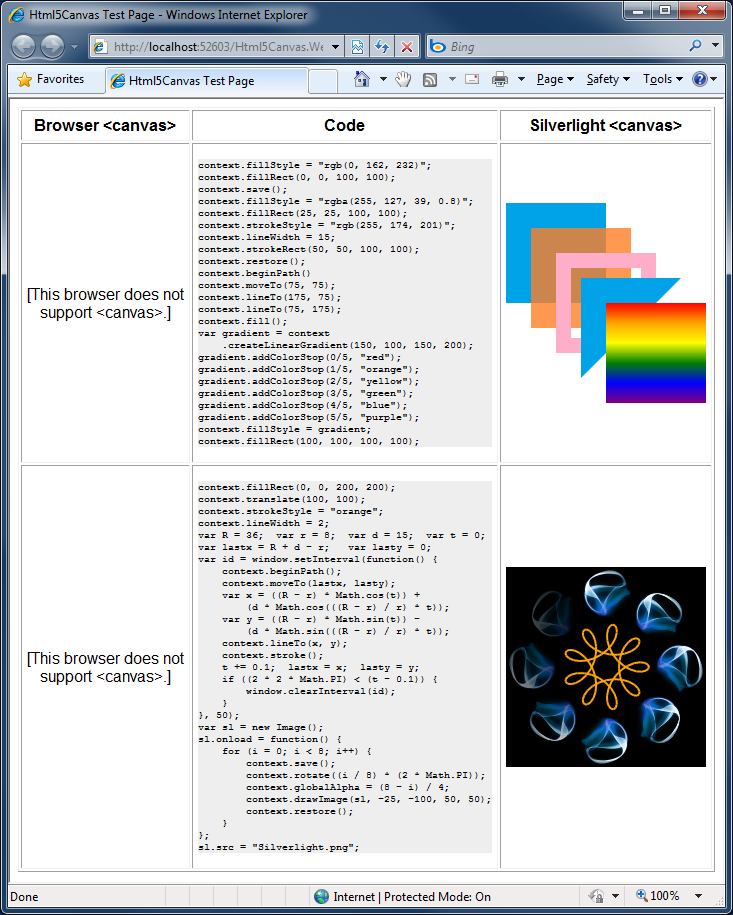Following up on some of the attention [Live sample posted and a *very* small tweak to the Html5Canvas source code!]
I posted the source code for a Silverlight implementation of the HTML 5 <canvas> API yesterday and some readers have been pretty interested in the concept/implementation. Thanks for all your comments and feedback!
Earlier today, kind user Fabien Ménager left a comment reporting an unhandled exception in the sample app and was generous enough to follow up by sending me the text of the exception. And as soon as I saw it, I knew the problem - both because of what it said and because of the language it was in!
Here, you give it a try:
System.FormatException: Le format de la chaîne d'entrée est incorrect.
Here's a hint: the operating system's culture settings for France (and many other countries) use a ',' for the decimal separator instead of '.' (as is used in the United States). For example, while Pi would be written as "3.14" with the US culture settings, it would be written as "3,14" with French culture settings. And while Html5Canvas doesn't accept any user input, it does parse some of the JavaScript input that makes up the script... Specifically, my sample application includes the following line:
context.fillStyle = "rgba(255, 127, 39, 0.8)";
The <canvas> specification allows for strings to be assigned to the fillStyle property, so it's necessary for Html5Canvas to parse that string. And it was the "0.8" alpha value that was the problem here. Attempting to parse that value with the user's culture settings will fail for a culture that uses ',' as the decimal separator. This is actually a common problem for text formats that are meant to be used in multiple cultures - and the typical solution is to require that the text always be written for some form of invariant culture (which typically adheres to the US's conventions). Therefore, the trivial fix was to parse that value according to the invariant culture (i.e., always use '.' as the decimal separator) instead of using the default parsing behavior which honors the user's settings.
Aside: The default behavior is nearly always what you want... except for very rarely when it's not... like this time!:)
Of course, if I'd reviewed the project's code analysis warnings a few days ago, I would have found this issue earlier. And while I usually do that for all my sample code, I skipped it this time because it was proof-of-concept code and because I knew the "Naming" analysis rules threw lots of warnings for the official <canvas> API (mainly because JavaScript tends to follow different conventions than .NET). So as punishment for my misdeed, I went ahead and fixed (or suppressed) all of the non-"Naming" code analysis warnings in the project!
To be clear, there is no functional change because of this - but now the code is just a little bit cleaner.
[Please click here to download the updated source code to Html5Canvas and its sample application.]
And while I was at it, I decided to post the sample application in runnable form just in case there were some people who wanted to watch the Hypotrochoid draw itself, but didn't want to compile the sample themselves.
[Click here or on the image below to run the sample application in your browser.]
It has been great to see all the interest in this project over the past couple of days - thanks very much for everyone's support, feedback, and kind words!!
